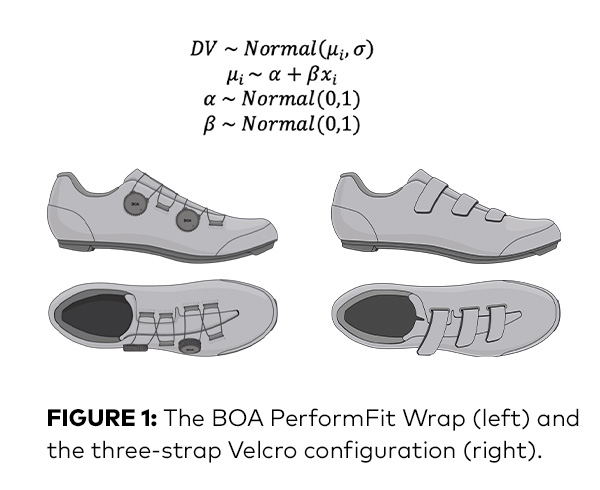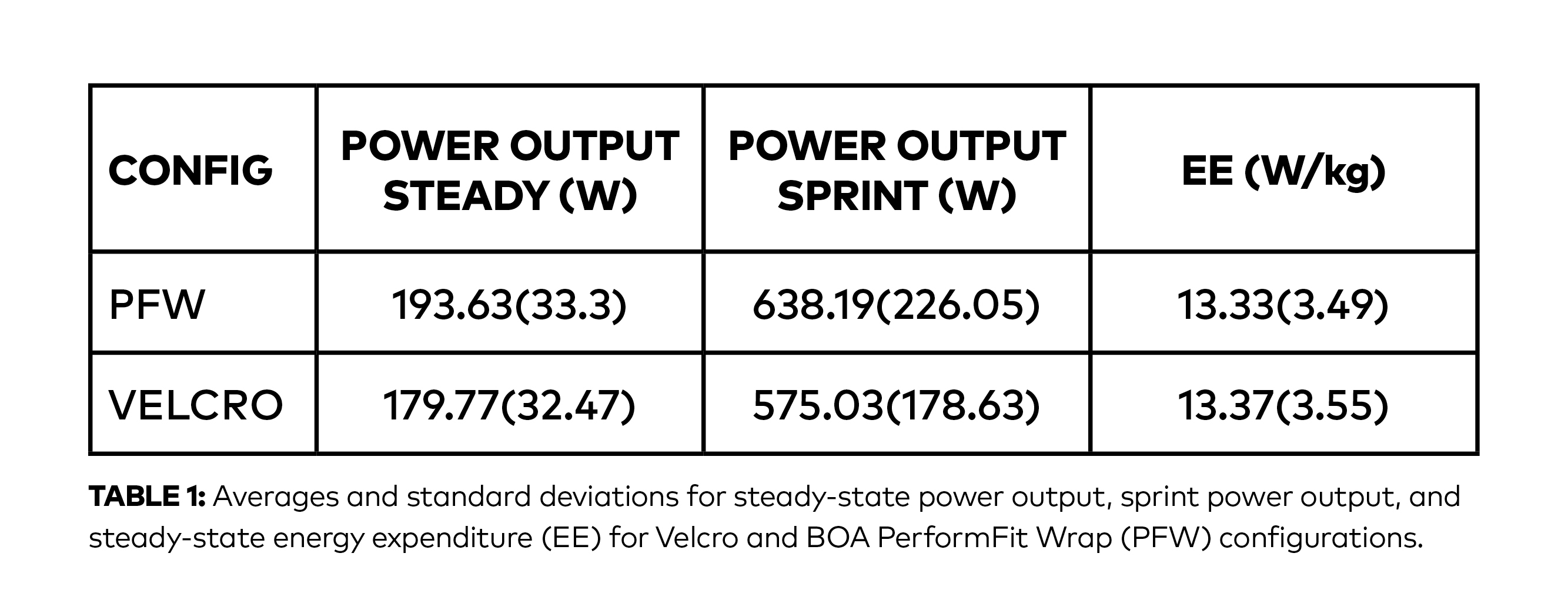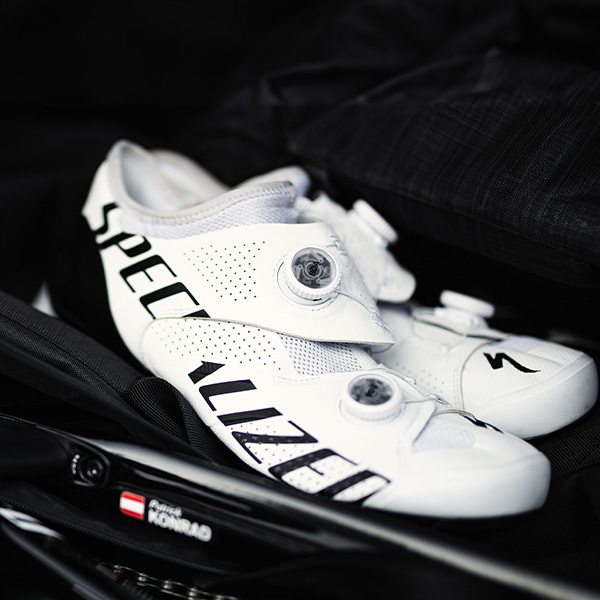BOA® WRAP SOLUTIONS IMPROVE FIT AND POWER TRANSFER
Written By:
Bethany Kilpatrick, Kathryn Harrison,
Eric Honert, Daniel Feeney
BOA® Technology, Denver, CO
Power output is a critical component of competitive road cycling. In long-distance races that can span from 50 to over 300km, it is essential to have efficient energy expenditure while maintaining steady power output. Among the many components that impact cycling performance, cycling shoes are integral in transferring force into the pedals.
Our study investigated whether power output and metabolic economy differed between a BOA®-powered wrap configuration and a three-strap Velcro (V) configuration (Fig. 1). BOA® scientists hypothesized that the BOA®-powered wrap would increase power output during 15-second sprints following steady, submaximal riding.


Results and Discussion
We found that the BOA®-powered wrap shoe uppers increased cycling power during sprinting and, surprisingly, were associated with greater power output during steady-state riding with no change in EE (energetic expenditure).
Despite asking subjects to maintain equal power output and providing 3-second smoothed average power feedback during riding, the BOA®-powered wrap increased power during submaximal riding (estimate 6 watts, 94% posterior > 0, 95% CI: -0.2% to 4.79%) with no change in RPE (rate of perceived exertion) or energetic expenditure. Similarly, there was an increase in sprint power output in the BOA®-powered wrap vs. the three-strap Velcro configuration (estimate 64 watts, 97% posterior > 0, 95% CI: 0.14 to 15.5%).
Although previous studies have investigated how shoe uppers influence performance in agility movements3, this is the first study to test the impact of upper construction on cycling performance. Notably, 11/13 subjects had the greatest peak power in the BOA®-powered wrap. Moreover, since there was no change in EE or RPE between the two states despite increased power output, we conclude that subjects experienced greater power transfer in the BOA®-powered wrap. Increased power output with the BOA®-powered wrap uppers could be due to improved fit, causing a greater connection between the foot and midsole. This, in turn, creates less movement variability between the shoe and the foot on the downstroke. Because there is limited movement within the shoe, there is a more direct power transfer from the shoe to the pedal.

Altogether, this scientific examination proved and uncovered significant results in the following performance areas:
Endurance- Greater power output at the same metabolic cost.
Power- Greater peak power during sprinting.
Health- Improved pressure distribution during sprinting and steady-state riding.
Methods
BOA® Biomechanists recruited 13 male recreational cyclists who rode more than five days per week. The cyclists tested two identical road cycling shoe soles, one with a BOA®-powered wrap consisting of a dual dial wrapping configuration and the second with three Velcro straps. The cyclists rode for seven minutes in each shoe twice in a counterbalanced order (i.e., A-B-B-A). Subjects were instructed to maintain a constant power output, which was determined as approximately 70% predicted maximum heart rate and a rating of perceived exertion of 5/10 during the warm-up—the next two minutes comprised two 15-second sprints and 45 seconds of self-selected easy riding between. Oxygen uptake and carbon dioxide output were measured during minutes 3-5 of steady-state riding to estimate energetic expenditure (EE). Steady-state and sprinting power outputs were measured via a cycle ergometer. Data was converted into Z-scores for each subject and entered a random intercept, random slope probabilistic model with priors centered on 0, as shown below. The percentage of the posterior greater than 0 and the 95% credible intervals are presented for each power metric.
References:
-
Burns & Kram (2020). Footwear Science, 12(3), 185-192
-
Fletcher, et al., (2019). Journal of sports sciences, 37(13), 1457-1463.
-
Straw & Kram (2016). Footwear Science, 8(1), 19-22.
-
Subramanium et al., (2021) J Sports Sciences, 1-9.
-
Harrison et al., (2021). Footwear Science, 13(2), 167-180.